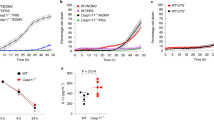Abstract.
Macrophage immune capability depends on their efficient redox potential expressed in the effective release of reactive oxygen species (ROS) and nitric oxide. In this study the effect of the activation of a specialized Ca2+ channel on macrophage redox function during Chlamydia pneumoniae infection was explored. C. pneumoniae exhibited a profound and sustained Ca2+ influx capacity, with evidence of activity attributable to their lipopolysaccharide (cLPS) content. Also the organism showed an additional Ca2+ influx signal in macrophages exposed to thapsigargin, and there was evidence for the operation of a single ion channel of the L type as demonstrated by the effect of L-type channel antagonists (methoxyverapamil and nimodipine) despite exposure to Ca2+-rich medium. C. pneumoniae or cLPS induced intracellular ROS and NO generation in a manner consistent with dependence on intracellular calcium. L-type Ca2+ channel blocking significantly prompted C. pneumoniae inclusion formation. These findings suggest that Ca2+ influx signal and redox function in C. pneumoniae-infected macrophages depend on L-type Ca2+ channel activation.
Similar content being viewed by others
Author information
Authors and Affiliations
Additional information
Electronic Publication
Rights and permissions
About this article
Cite this article
Azenabor, A.A., Chaudhry, A.U. Effective macrophage redox defense against Chlamydia pneumoniae depends on L-type Ca2+ channel activation. Med Microbiol Immunol 192, 99–106 (2003). https://doi.org/10.1007/s00430-002-0164-8
Received:
Issue Date:
DOI: https://doi.org/10.1007/s00430-002-0164-8




